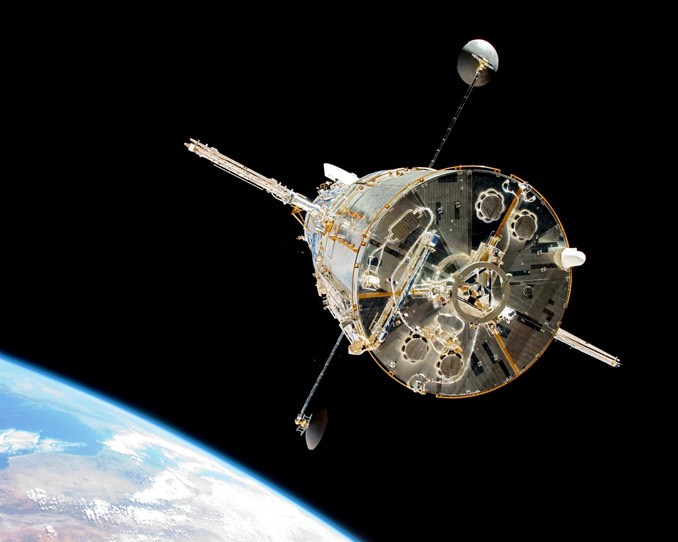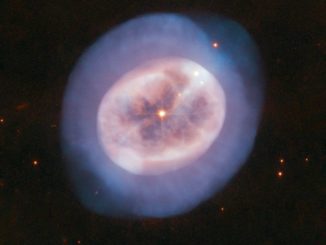
NASA engineers troubleshooting problems with on of the Hubble Space Telescope’s stabilising gyroscopes say they have managed to restore the unit to normal operation. Pending final tests to confirm the fix, the observatory will be clear to resume normal three-gyro science observations.
After a final space shuttle repair mission in 2009, Hubble was let with six operational gyroscopes: three older-design models and three newer units that are less susceptible to failure. Two of the older models failed earlier and a third malfunctioned 5 October. That left the telescope with two newer-model gyros and a third that was being held in reserve.
When engineers tried to activate the back-up gyro, it indicated it was running faster than it actually was. As a result, science operations were suspended and Hubble was put into protective safe mode while engineers analysed telemetry to determine what might be wrong.
The gyros are marvels of complexity and precision, helping Hubble move from point to point and to stay locked onto a target for as long as required. They operate using a motor-driven wheel suspended in a sealed cylinder that is suspended in a thick fluid. The motor is powered by wires about the thickness of a human hair that pass through the fluid.
“Electronics within the gyro detect very small movements of the axis of the wheel and communicate this information to Hubble’s central computer,” NASA said in an update. “These gyros have two modes — high and low. High mode is a coarse mode used to measure large rotation rates when the spacecraft turns across the sky from one target to the next. Low mode is a precision mode used to measure finer rotations when the spacecraft locks onto a target and needs to stay very still.”
In an attempt to correct the problem with the backup gyro, engineers shut it down and turned it back on in rapid succession. The idea was to clear any faults that might have occurred when it was started up 6 October after the earlier failure. But that didn’t work.
On 18 October, engineers ordered Hubble to move about in opposite directions to clear anything that might have been blocking the movement of the cylinder housing the motorised wheel. That test, and a similar exercise the next day, apparently cleared out whatever was causing the problem.
“Hubble then executed additional manoeuvres to make sure that the gyro remained stable within operational limits as the spacecraft moved,” NASA said. “The team saw no problems and continued to observe the gyro through the weekend to ensure that it remained stable.
“The Hubble operations team plans to execute a series of tests to evaluate the performance of the gyro under conditions similar to those encountered during routine science observations, including moving to targets, locking on to a target, and performing precision pointing. After these engineering tests have been completed, Hubble is expected to soon return to normal science operations.”



